Il est possible que cette traduction ne reflète pas les dernières mises à jour du tutoriel source. Aidez à mettre à jour la traduction ou bien consultez le tutoriel source.
Introduction
La carte mère fonctionne comme le hub central de communication entre tous les composants d'un appareil. Si votre appareil ne fonctionne pas correctement et si plusieurs composants tombent en panne, la carte mère devra peut-être être remplacée. Utilisez ce guide pour remplacer la carte mère du Nest Hello.
Ce dont vous avez besoin
-
-
Insérez le médiator entre la façade noire et le boîtier blanc du Nest Hello.
-
Retirez la façade de l'appareil avec le médiator.
-
Retirez complètement la façade de l'appareil, n'ayez pas peur de tirer fort.
-
-
-
Décollez les autocollants du couvercle et utilisez le tournevis cruciforme n ° 000 pour retirer les quatre vis.
-
-
-
Insérez le médiator entre le boîtier blanc et le circuit interne noir et faites-le levier.
I ended up doing the headlight lens restoration method - I scraped away any plastic that was flaking off and then I used progressively finer sandpaper (start with 400-600 grit and go up from there). I finished it with rubbing compound and polish. Looks decent.
Also - be careful not to cut or displace the rubber gasket that runs around the outside of the main body that has the circuitry - you'll risk losing the waterproofing
What is the replacement battery type please?
BUSFUIVA Replacement Battery for Nest 1ICP7/17/26, Hello, NC5100US, C1241290, Vido Doorbell Wired. 3.7V 280MAH https://a.co/d/38BD8qY
The top end has some kind of mild adhesive (the blue stuff). The bottom end came out more easily for me, and then I ended up bending my board slightly by trying to pry out the top end. May be better to start on the top end if you can get something under the edge of the board to get leverage.
The black ribbon cable was instantly sheared in half the moment I got the two halves apart, which took more force than I was hoping to need. Turns out the ribbon cable is attached to a sharp metal piece and it will easily tear through it. No longer worth it to replace the battery for me, sadly.
What a stupid design by Nest. If they know that battery will fail they should at least make it user accessible when removed from mount. Replaced mine. It’s a pain getting to the battery and it’s easy to crack the faceplate when prying it off. Also the plastic tools included with kit will fail before you’re into the device.
If you can manage to get to the battery without destroying the Nest Doorbell it’s worth it to get a few more years of use.
-
-
-
-
Utilisez le Phillips # 000 pour retirer les deux vis fixant le câble ruban au boîtier blanc.
-
-
-
Retirez les six plus petites vis illustrées avec le tournevis cruciforme n ° 000.
-
Retirez les trois plus grandes vis illustrées avec le tournevis cruciforme n ° 000.
-
Pour remonter votre appareil, suivez ces instructions dans l'ordre inverse.
Pour remonter votre appareil, suivez ces instructions dans l'ordre inverse.
Merci à ces traducteurs :
90%
[deleted] nous aide à réparer le monde ! Vous voulez contribuer ?
Commencez à traduire ›
2 commentaires
@viteapen13 Hi Daniel, question for you. On step 9, is the enclosing shell for the main board (top portion of the photo) metallic or plastic? Also, the blue material off the shell foam? Last, the blue regular stuff from the bottom board, is that some kind of thermal paste? Thanks.








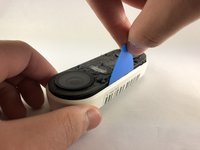
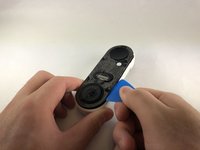
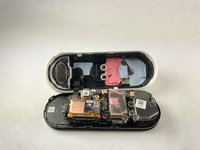



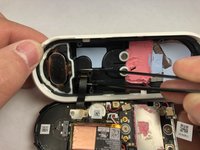
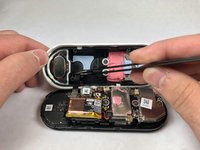



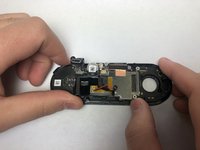
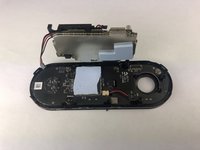


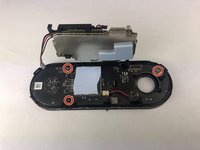
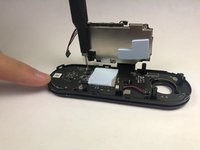


I had to use a metal spudger tool to start and then used guitar picks.
Joel Lundi - Réponse
Be afraid to pull hard. The faceplate will break in two.
B Bremer - Réponse
I did the JerryRigEverything method and slipped a razor under the faceplate to separate it carefully from the body. Worked perfectly and nothing was damaged
There I Fixed It - Réponse
Be careful with the wiring and the heater element. I must have shorted something together when it put it back together and now it will no longer power up. It is probably best to cut the wires to the heater and deal with the consequences in the cold temperatures.
Joe I. Fabritz - Réponse
The secret I think is slicing through the adhesive. I shoved multiple picks in and worked my way around. You want to cut the adhesive. Prying is likely to break the faceplate. The big hint is the next picture in the step, seeing where the adhesive is.
Arnold de Leon - Réponse